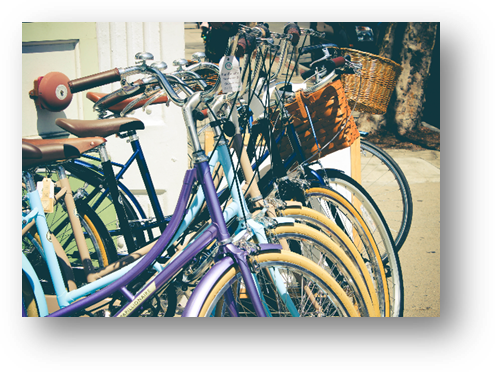2. REDISTRIBUTION: ACCESS VERSUS OWNERSHIP
Within the circular economy, there is a shift in the distinction between consuming the thing – product or material – and using it. Biological materials are materials that can be safely returned to the natural world after they have been used, where they will break down over time and release essential nutrients back into the environment. Technical materials cannot re-enter the environment. These materials, such as metals, plastics, and synthetic chemicals, must continuously cycle through the system so that their value can be captured and recaptured.
In a circular economy, biological materials are the only ones that should be thought of as consumable, while technical materials are the ones that are used. It makes no sense to say that we consume our bicycles and ovens in the same way that we consume food. Our relationship to materials needs to be viewed differently in a circular economy, to create a more sustainable and environmentally friendly way of living.
That seemingly small distinction poses a new question – do we need to own everything to use it? Another question that follows this idea is, how many objects do we own for that “one thing” project that needed to be done?
The most environmentally friendly objects are those used frequently. Frequent use makes the overall cost lower, there is no need to produce more of the thing to satisfy the same need in the area. It’s the access to a product that is important rather than the product itself. Owning requires something new to be manufactured, while access uses what’s already made.
This leads to the sharing economy, a fairly new concept coined in the 1970s. The idea of sharing economy is based on giving access to a product or resource to an individual or company for some time, in most cases making it more affordable per use. In most cases, the lending of the resource is aided by IT solutions (a website and/or a mobile app). The main goal of sharing economy is to connect people who have underutilized assets with those who want to use them.

There are two main types of digital spaces in sharing economy: companies that developed their platforms to give access to items and resources, and typical sharing platforms where the owner of the website is there to help connect owners with a person needing it. In both cases, the platform is there to connect the owner of the item with the customer.
This concept in a way shifts the responsibility for the item to the collective.

 Español
Español Turkish
Turkish български
български Magyar
Magyar Polski
Polski Português
Português